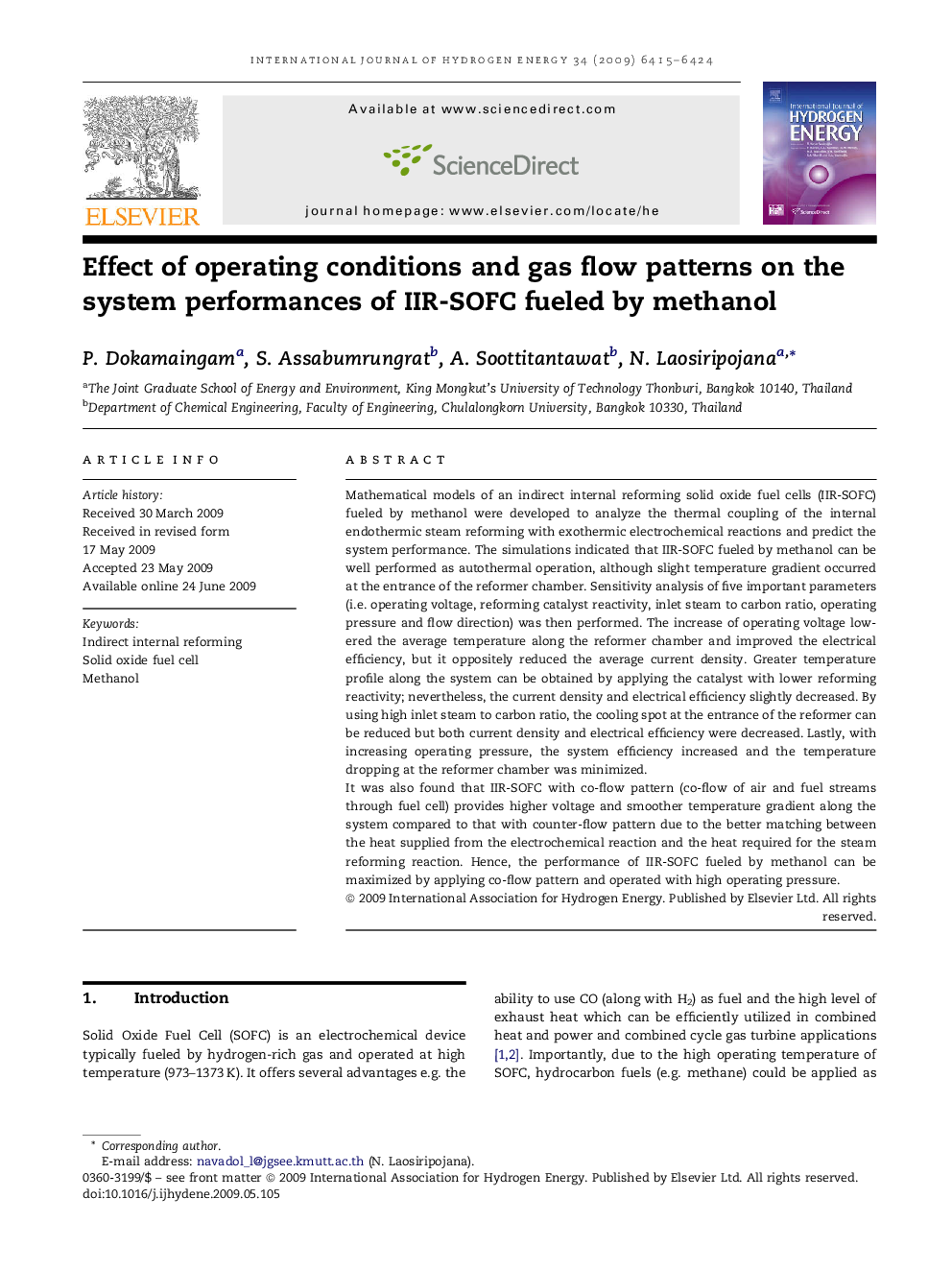| Article ID | Journal | Published Year | Pages | File Type |
|---|---|---|---|---|
| 1283154 | International Journal of Hydrogen Energy | 2009 | 10 Pages |
Mathematical models of an indirect internal reforming solid oxide fuel cells (IIR-SOFC) fueled by methanol were developed to analyze the thermal coupling of the internal endothermic steam reforming with exothermic electrochemical reactions and predict the system performance. The simulations indicated that IIR-SOFC fueled by methanol can be well performed as autothermal operation, although slight temperature gradient occurred at the entrance of the reformer chamber. Sensitivity analysis of five important parameters (i.e. operating voltage, reforming catalyst reactivity, inlet steam to carbon ratio, operating pressure and flow direction) was then performed. The increase of operating voltage lowered the average temperature along the reformer chamber and improved the electrical efficiency, but it oppositely reduced the average current density. Greater temperature profile along the system can be obtained by applying the catalyst with lower reforming reactivity; nevertheless, the current density and electrical efficiency slightly decreased. By using high inlet steam to carbon ratio, the cooling spot at the entrance of the reformer can be reduced but both current density and electrical efficiency were decreased. Lastly, with increasing operating pressure, the system efficiency increased and the temperature dropping at the reformer chamber was minimized.It was also found that IIR-SOFC with co-flow pattern (co-flow of air and fuel streams through fuel cell) provides higher voltage and smoother temperature gradient along the system compared to that with counter-flow pattern due to the better matching between the heat supplied from the electrochemical reaction and the heat required for the steam reforming reaction. Hence, the performance of IIR-SOFC fueled by methanol can be maximized by applying co-flow pattern and operated with high operating pressure.
